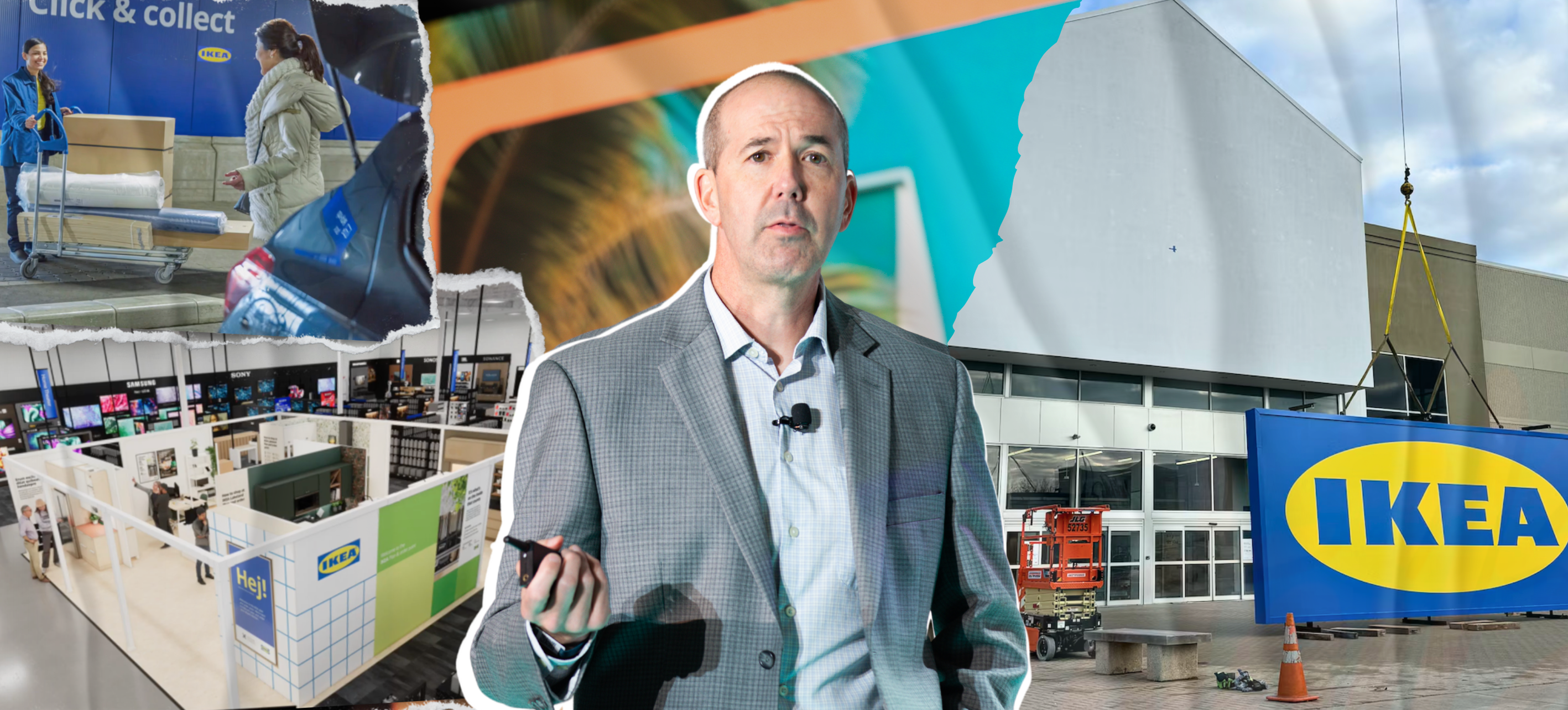Leaders from Target, Five Below, Tractor Supply, and GetGo gathered at RetailSpaces for a candid discussion about adapting their store development strategies in today's rapidly evolving retail landscape. The session, "Rethink or Sink: Evolving your Store Development Strategy," was moderated by Blake Brosa, Executive Vice President of Bureau Veritas, who guided the retail executives through exploring both current innovations and future opportunities.
Shifting Development Strategies
GetGo, the convenience store arm of Giant Eagle, is entering a new chapter after announcing its $1.6 billion sale to Circle K. GetGo's Micklin explained how this transition will help fuel both companies' growth strategies - providing capital for Giant Eagle's supermarket investments while bringing GetGo's innovation framework to Circle K's larger platform of 7,000 stores.
Target is making a notable pivot back to larger format stores after years of focusing on smaller urban locations. The retailer is only halfway through its massive remodel program and has ambitious plans to build 300 new stores. This shift requires rebuilding internal capabilities around prototypes and efficient project delivery.
Five Below is taking a more measured approach to growth, planning to reduce new store openings from 230 this year to 150-180 next year. This adjustment reflects a strategic shift toward prioritizing store quality and financial performance over pure unit growth. The company is also focused on expanding its Five Beyond shop concept across its fleet.
Meanwhile, Tractor Supply is continuing its growth trajectory, with approximately 80 new stores this year and plans for 90 new stores next year, along with over 275 renovations including garden center additions. The company is transitioning from build-to-suit to self-development, allowing them to leverage their financial strength and maintain better control over the development process.
.jpg?width=1000&height=667&name=Tractor_Supply_Storefront_3-(1).jpg)
Industry Challenges
Rising interest rates have particularly impacted ground-up development projects and developer relationships, according to Tractor Supply's Rogers. Cost escalation remains a pressing concern across the board, while workforce development has emerged as a critical industry-wide challenge. Target's Koehler highlighted the persistent shortage of talent in architecture, engineering, and construction, calling for industry-wide collaboration to build a stronger workforce pipeline.
Operational complexities continue to mount as retailers work to integrate physical and digital experiences seamlessly. Supply chain and procurement challenges are reshaping approaches to store development and construction timing. As Koehler noted, success requires breaking down traditional silos between real estate, construction, and operations teams to create more integrated solutions.
Evolution of Vendor Partnerships
A fundamental shift in vendor relationships is underway, with all four brands moving toward fewer but deeper strategic relationships. This approach allows for better alignment of processes, more consistent teams, and improved cost certainty. GetGo's Micklin emphasized that vendors are seen as extensions of their team, saying they look for partners who mirror their values and cultural approach while actively driving the business forward. Five Below and Target particularly stressed the importance of vendors who can contribute to long-term strategic goals rather than simply executing individual projects.
The Future of Development
Data and customer insights are increasingly steering development decisions. Tractor Supply's Rogers highlighted their successful transition to machine learning for site selection, explaining how their Neighbors Club data from over 30 million members now helps them understand sales potential at a category level and customize store formats for specific markets. Target's Koehler discussed how they're breaking down traditional silos, noting that stores must now function as both retail spaces and mini distribution centers.
GetGo's Micklin highlighted retail media as a key innovation priority, discussing how digital engagement both inside and outside stores is creating new ways to connect with customers and vendor partners. This approach aims to create more personalized customer experiences while opening new revenue streams.
Store designs are evolving into hybrid spaces that serve both traditional shopping and digital fulfillment. This transformation requires new approaches to construction, including more flexible formats and infrastructure that can adapt to changing operational needs. As Target continues its remodel program, Koehler emphasized the importance of finding the right balance between traditional retail space and fulfillment capabilities.
Looking Ahead
Innovation and adaptation emerged as key themes throughout the discussion. Five Below's Calderon stressed that innovation shouldn't be viewed as a project but rather as an ongoing process and, ultimately, a behavior. Target's Koehler highlighted how collaboration has become "the new currency," encouraging teams to get uncomfortable and challenge traditional approaches.
As the industry continues to evolve, the leaders outlined several key priorities:
- Developing more adaptable store formats
- Building stronger, more strategic vendor relationships
- Investing in data analytics and customer insights
- Creating more efficient development and construction processes
- Finding new ways to attract and retain talent in the AEC industry
The consensus among these retail leaders was clear: success in store development now requires a more sophisticated approach that balances traditional metrics with new considerations around customer experience, digital integration, and operational flexibility. As Calderon reminded the audience, "We are a retail company that does development, not a development company that does retail."

Posted by
Physical Retail Reimagined.
RetailSpaces is a community for store development and design innovators.
March 29-31, 2026 | San Antonio, TX
Learn More!


-4.png)

-4.png)



Comments